Lighting isn’t just a way to illuminate your space or decor; it also has a big impact on your overall energy consumption. This article explores efficient lighting options, drawing lessons from our This Old House TV project house in Bedford, Massachusetts. Let’s see how the owners navigated the challenges of finding modern lighting that followed energy codes and still reflected their personal style.
The Truth About Efficient Lighting
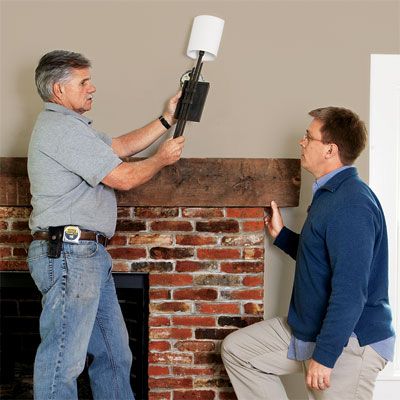
Like many homeowners, Joe and Becky Titlow faced the challenge of balancing style with energy efficiency in their lighting choices. Their goal was to complement their home’s style but also to meet state regulations requiring 50% of the lighting in remodels to be energy efficient.
The Titlows quickly realized that selecting energy-efficient lighting options requires extensive research. The modern lighting landscape has evolved significantly, with a shift away from traditional incandescent bulbs to more efficient alternatives. New technologies have emerged, each with its own set of pros and cons, and add complexity to the decision-making process. To navigate these choices, the couple sought expertise from lighting designer Susan Arnold of Wolfers Lighting. She helped them find options to reduce their lighting energy bill by as much as 60%.
Shown: TOH general contractor Tom Silva places a wall sconce above the fireplace in the new family room. The TOH team used compact fluorescent lamps (CFLs) in these fixtures.
You Don’t Need To Stockpile Incandescents
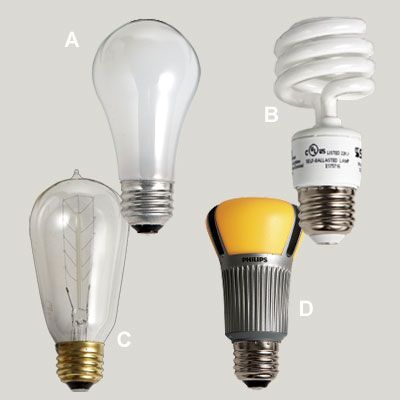
The Energy Independence and Security Act of 2007 (EISA 2007) established stricter federal efficiency standards for certain bulbs. Most traditional incandescents, particularly those using 40 watts or more, don’t meet these requirements. But some incandescent bulbs remain available. The legislation doesn’t affect utility bulbs for appliances and low-wattage decorative bulbs, such as exposed-filament varieties. This means you can still incorporate these stylish options in your lighting designs, as the Titlows did in their family room.
New bulbs that meet modern energy standards include:
- General-purpose halogen bulbs
- CFLs
- Light-emitting diodes (LEDs)
You Can Keep Your Old Light Fixtures
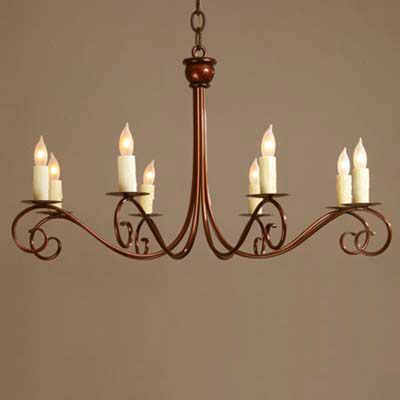
If you’re worried that you need to replace existing fixtures to achieve energy efficiency, this isn’t necessarily the case. While many fixtures now carry an Energy Star rating, the primary factor in energy savings is the bulb itself, not the fixture. According to David Bergman, a New York-based light-fixture designer and architect, “It’s all about the bulbs a fixture uses.”
Energy Star fixtures only accept efficient bulbs, which is how they achieve their energy-saving status. This means that, in many cases, you can simply replace the bulbs in your existing fixtures with energy-efficient alternatives to get similar savings without a complete overhaul of your lighting setup.
CFLs Can Look Great With Traditional Fixtures
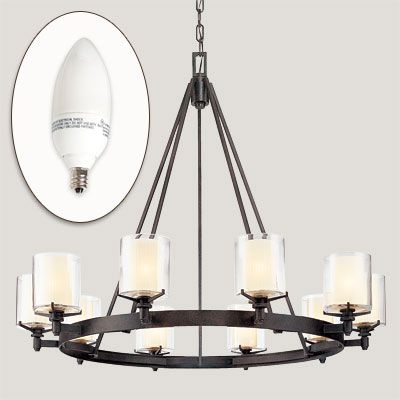
Some homeowners are hesitant to adopt CFLs because of their distinctive spiral shape, which can look out of place in traditional fixtures. Luckily, manufacturers have addressed this concern by developing CFLs housed in glass coverings that mimic the shape of conventional bulbs. Look for “A19” on the packaging to find CFLs that match the classic Edison bulb shape and size.
CFLs offer significant advantages over incandescent bulbs:
- They’re available in various shapes and sizes, including candelabra-style chandeliers.
- They have a longer lifespan (10,000–15,000 hours compared to about 1,500 hours for incandescents).
- They consume substantially less energy.
The Titlows embraced this technology, using candelabra-style CFLs in a chandelier for their new family room.
Other Considerations
CFLs have a ballast, which houses the bulb’s circuitry. Some consumers find the ballast visually distracting. Choosing fixtures with shades that conceal the ballast, as the Titlows did with their chandelier, can address this concern. By integrating these efficient bulbs thoughtfully, you can maintain your home’s style while benefiting from energy savings.
Your Fixtures Can Shorten the Life of Your CFLs

While CFLs offer excellent energy efficiency and longevity, some practices can significantly reduce their lifespan. It’s important to be aware of these factors to maximize the benefits of your CFL bulbs:
- Frequent on-off cycling: Turning CFLs on and off too often can shorten their life.
- Enclosed fixtures: Using CFLs in fixtures that don’t allow heat to dissipate can cause premature failure.
- Upside-down installation: Placing CFLs with the ballast above the bulb can lead to heat damage.
To address these issues, think about the following solutions:
- Choose fixtures that provide adequate ventilation for the bulbs.
- Opt for fixtures that orient CFLs horizontally or upright, as the Titlows did in their home.
- Use CFLs in areas where lights remain on for extended periods.
LED Lightbulbs
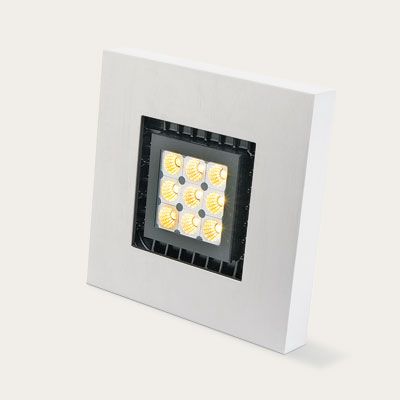
LEDs have come a long way since their early days as indicator lights in electronics. Today, LEDs are available in a wide range of lighting applications, from under cabinet lighting to overhead fixtures and even as replacements for traditional bulbs in everyday lamps.
Key advantages of LED lighting include:
- Extremely long lifespan (25,000–50,000 hours)
- Very low energy consumption, even compared to CFLs
- Versatility in design and application
Modern LED bulbs are designed to mimic the look and light quality of traditional incandescents, making them suitable for most home lighting needs. They come in various shapes, sizes, and color temperatures. The Titlows embraced this technology by installing low-profile, surface-mount LED panel fixtures in their kitchen.
Use Pricey LEDs Strategically
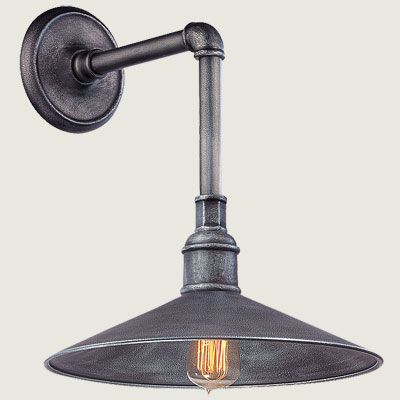
While LED bulbs offer impressive energy savings and longevity, their higher upfront cost can be a deterrent for some homeowners. A strategic approach to incorporating LEDs can help balance the benefits with your budget.
The Titlows adopted this strategy by doing the following:
- Targeting fixtures that remain on for extended periods, such as the lamp in their front foyer.
- Using LEDs in areas where traditional lighting options were impractical, like in their low-ceiling kitchen.
- Combining LEDs with other efficient lighting types throughout the house.
This approach helped maximize the benefits of LED technology where it matters most while still managing overall lighting costs. By strategically placing LED bulbs in high-use areas and choosing efficient alternatives for other spaces, you can achieve a balance between performance and expense.
Dimmability
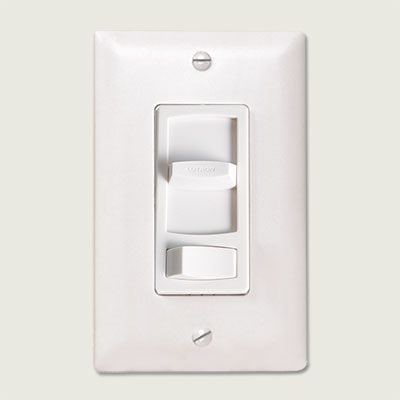
Dimmability is an important feature for many homeowners. It allows for mood lighting and energy savings. While both CFLs and LEDs can be dimmed, there are some limitations to know about:
- CFLs can typically be dimmed to 10–30% of full brightness.
- LEDs perform slightly better, dimming to about 10–15% of full brightness.
- Traditional incandescents can dim to about 1% of full brightness.
To achieve optimal dimming performance with CFLs and LEDs, use compatible dimmer switches. The Titlows installed LED-compatible dimmers for their kitchen lights, allowing them to adjust the brightness to suit their needs.
Considerations for Dimmable Lighting
When shopping for dimmable CFLs or LEDs, look for packaging that specifically states the bulb is dimmable. Using non-dimmable bulbs with a dimmer switch can lead to flickering, reduced lifespan, or even damage to the bulbs or switch.
It’s also helpful to consult with a lighting specialist to check the compatibility of dimmable LEDs or CFLs with existing dimmer switches.
Easy-To-Read Labels Make Picking the Right Bulb Easy
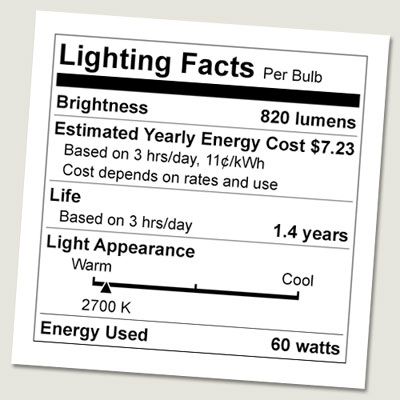
The FTC enforces an Energy Labeling Rule that makes it easier for consumers to choose the right bulbs for their needs. Labels provide important information about the bulb’s performance and characteristics:
- Brightness (lumens): Indicates light output. For example, a 60-watt equivalent bulb typically produces 700-850 lumens.
- Estimated yearly energy cost: Helps consumers understand potential savings.
- Lifespan: Shows how long the bulb is expected to last under normal usage.
- Light appearance (Kelvin): Measures color temperature. Lower numbers (around 2,700K) indicate warmer, more yellowish light, similar to traditional incandescents.
While it’s not always on the label, the color rendering index (CRI) is also important. A CRI of 80–90 is suitable for most home applications and makes sure colors appear natural and vibrant under the light.
If You Love Incandescents, You Still Have Options
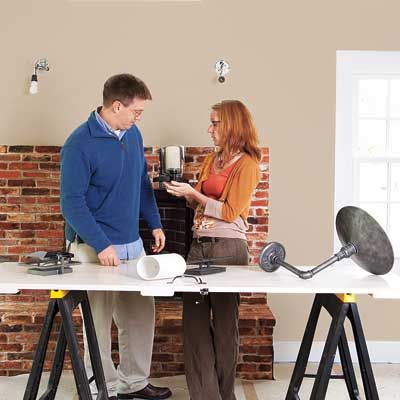
Halogen bulbs offer a viable alternative that meets current efficiency standards for those who prefer the warm glow of incandescent lighting. Halogen technology uses a pressurized capsule containing a tungsten filament and halogen gas, allowing the filament to produce more light per watt of energy consumed.
Key features of halogen bulbs include:
- Approximately 25% more energy-efficient than traditional incandescents
- Available in familiar shapes and sizes for easy replacement
- Similar light quality and dimmability to standard incandescents
For example, Philips offers an EcoVantage bulb that uses 72 watts to produce light equivalent to a 100-watt incandescent. This feature allows you to maintain the lighting style you prefer while still improving energy efficiency.
Lighting technology continues to evolve rapidly. As Arnold points out, “The technology’s only getting better. Manufacturers are working hard on improvements.” This ongoing development may lead to even more efficient options that closely mimic the qualities of traditional incandescent lighting in the future.
The Future of Efficient Lighting
As technology advances, we can expect to see even more innovative lighting solutions. Some emerging trends include:
- Improved color-tunable LEDs that can mimic natural daylight cycles
- Integration of lighting with home automation systems for better energy management
- Smart lighting systems that adjust automatically based on occupancy and natural light levels
These developments promise to make efficient lighting not only more effective but also more customizable to individual preferences and lifestyles.
